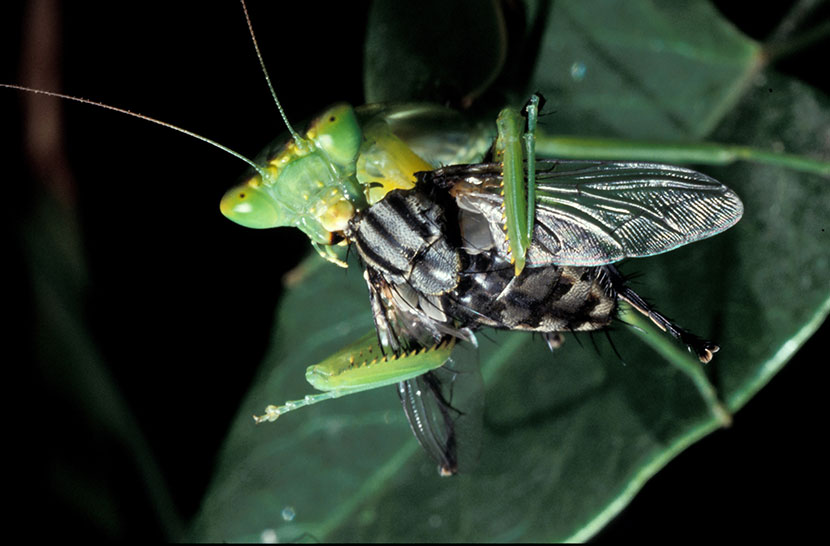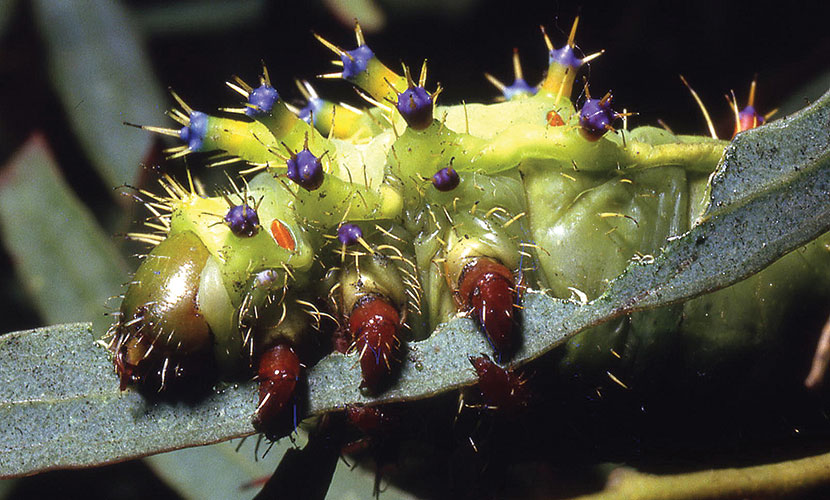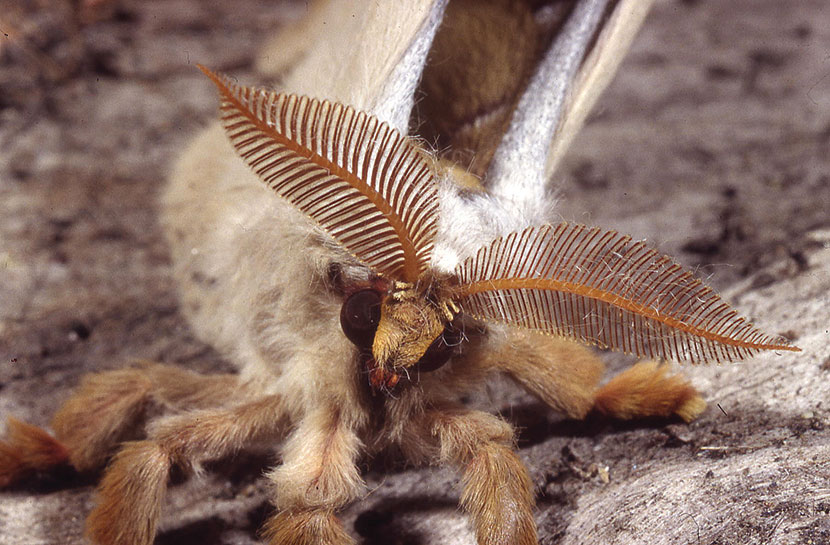Morphing in the old-fashioned way
If you’re like me you’ll have difficulty remembering the term for the way insects change from their young larval stage into adulthood.
Computer terminology has helped with the idea of morphing and that is exactly what these clever little devils have been doing for millions of years.
“Incomplete metamorphosis” applies to the lazier insects which, when born, simply become larger versions of themselves, a bit like you and me in fact, but strictly speaking, more like the praying mantis illustrated here. The more imaginative types, like butterflies and dragonflies employ a more complete make-over which is aptly termed “complete metamorphosis”.
In both cases, the growth of insects from hatching to adulthood is usually achieved by a series of moults. Unlike us, insects don’t have an inner skeleton, relying instead on an external or “exoskeleton” in which they develop and so are forced to jettison this hard cuticle each time they outgrow it. After huffing and puffing they burst out of the old skin and usually hide away in some safe place while the new outer protective layer hardens. Naturally during this period, without their protective armour, they are most vulnerable to predators and keeping out of sight is imperative for their survival.
The praying mantis is a great example to study. You’ll find plenty of them in your garden as they sit patiently waiting to rid your backyard of its flies and other pests. They’ll spring out of their little whitish grey egg sac (delightfully called an “ootheca”) on your back fence on the first hot morning in November, each only a few millimetres long. If you happen to find one in your garden today, he or she will have grown to about as long as your little finger. Developing through half a dozen moults, their wings won’t appear until the last when they’ll unfurl and are pumped full of liquid and air to form their final functional shape.
Nature is jam-packed with examples of metamorphosis. Dragonflies, for example, actually spend their early months (and even years in some cases) as aquatic insects entirely underwater. Fishermen use them as bait and call them “mud eyes”.
Normally, in metamorphosis, if the caterpillar is an attractive, colourful critter then the adult butterfly will be too. One exception is the emperor gum moth. The caterpillars are exotically beautiful (although superbly camouflaged in the gum leaves they inhabit, and rarely seen) but the adult moth is just another humdrum brown furry flutterer … the ugly duckling syndrome in reverse.
Most caterpillars, once in their cocoon or chrysalis, give up all activity, put their feet up and either watch the telly or have a long snooze. Bagworms, like the Saunders Casemoth, do so eventually but for a while, work like trojans. Starting life as tiny grubs, they cover themselves with bits of debris as a disguise. Then as they grow, they weave a tough silk cocoon reinforced with sticks which they drag along behind them as they forage. Every now and then they pop their heads out through a hole carefully slit in the side and chew off slightly bigger sticks which they glue to the case. They continue to add silk and timber until the bag is about 12 to 15cm long and they become a plump juicy morsel upon which any bird would love to dine. But hanging on your back fence, they are as safe as houses, the silk so tough it is impossible for a human to tear or for any beak to penetrate.
By the way, if you want to impress your friends you can tell them you can identify whether the hidden caterpillar is male or female without even seeing it. The trick is to look at the twigs at the bottom of the sack. If there is a long one looking a bit untidy, the occupant is probably female. This is because she has built this into the overall design as a landing pad for the male. As a moth, he alights and passes his “calling card” in through a small opening at the base of the cocoon. Cute, eh?
If you would like to see more of my work, scan below or check my Youtube channel under my name •

Jo Ryan unveils Ordered Chaos at Blender Studios






 Download the Latest Edition
Download the Latest Edition